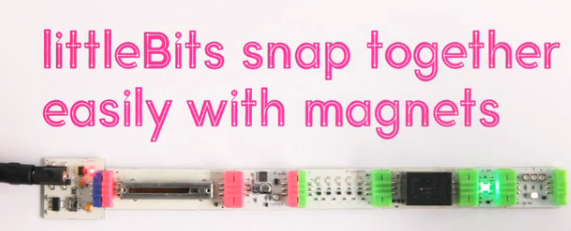 Update July 23, 2014 Wow. From toys to tools…LittleBits launches CloudBit to make any object ‘smart’!
Update July 23, 2014 Wow. From toys to tools…LittleBits launches CloudBit to make any object ‘smart’!
Sept. 4, 2012 “Light it, push it, twist it, bend it, buzz it, blink it, shake it…” the promo card beckoned before I even reached the Little Bits tent at the Maker Faire.
Hard to believe it’s back to school time already, and this fall, we’re kicking off with some STEM (Science, Technology, Engineering, and Math) “makers” in the media mix that are fun for even the tiniest tots to poke and prod and get jazzed about buildables; literally ‘turning the lights on’ with their imaginative engineering play.
The ease of use and colorful allure make even tech-shy kidlets light up with engineering engagement and snap together play. Ayah Bdeir, female founder of the Little Bits startup, was on my ‘must see’ list when I heard she was holding a demo workshop of what Bloomberg had touted as ‘Legos for the iPad generation’ with the goal of demystifying tech and circuitry to children as young as kindergarten. It was brilliantly simple, witnessing children’s open ended ‘aha’ moments of discovery…
The whole time I watched kids’ little hands at the work stations I kept thinking, “THIS is what back to school STEM programs should be like…creating and imagining, sharing and problem-solving, boys and girls building side by side, plunking and plugging in bits and gizmos until it ‘does something’ for the early learning ‘aha’ moment. STEM that blooms and grows, nourishes minds and makes the ‘why does it DO that’ question its own fact finding moment of hands-on fun.”
Sure enough, some kids barely even able to reach table height were squealing with glee when they’d make the circuit light up or ‘beep’ using the electronic modules that fit together with tiny magnets.
Little Bits requires NO soldering, wiring or programming, so it’s a huge hit with wee ones as it’s hard to foul up; the magnets repel when the wrong end is connected, making it almost foolproof for powering up, and prototyping anything from artsy critters to sophisticated cars and even interactive piggy banks out of soda bottles. (Note: The toy is safety labeled for 8+ due to choking hazards/magnets but children were building w/ease while parents supervised/were fully present so be advised)
The Little Bits themselves are purposeful little bits of energy and buildables (light sensor, coin battery, input/output, motion-trigger, wire, buzzer, dimmer, etc.) that could literally build a ‘working city’ of make-believe or individual objects with limitless imagination.
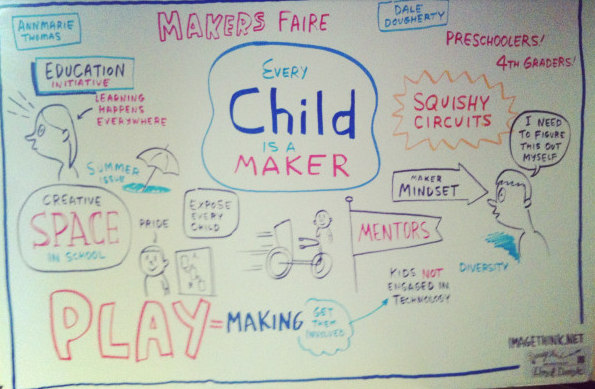 Joi Ito from MIT is one of the lead investors in Little Bits, (the founder also hails from MIT, and I’m a huge fan of their Media Lab as you can see by this post I wrote on the i/O brush, Using New Media to Teach Classic Art Techniques to Kids) and I see massive promise in education if they can get their price points down for bulk classroom use; it would be absolutely amazing.
Joi Ito from MIT is one of the lead investors in Little Bits, (the founder also hails from MIT, and I’m a huge fan of their Media Lab as you can see by this post I wrote on the i/O brush, Using New Media to Teach Classic Art Techniques to Kids) and I see massive promise in education if they can get their price points down for bulk classroom use; it would be absolutely amazing.
Ayah Bdeir was profiled on the TED “Fellows in the Field” video about her vision for collaborative, open source, independent play, hoping children build galleries of usable creations teaching each other through media and videos, posting their work to share globally.
In the clip below (she ends at 2:38 the rest is Lexus sponsored engineering/pioneering) Ayah Bdeir also talks about her dad inspiring her with wooden and plastic blocks and transistors growing up in Lebanon, and about our how we’re losing the ability to play with technology as it’s started to become more finished and closed. I completely agree with this, we’re all enveloped by technology, yet have no idea ‘how it works or why,’ much like I felt taking college anatomy for the first time!
She sums, “We now live in a world that is full of lights and sounds and things reacting to each other, and screens, and we don’t understand the guts of it…It’s very important for us to go back to basics, to see, and to say that the magic of electricity is something that is everywhere that’s around us—it’s beautiful and we have to contribute to it and we have to be creative with it…Our biggest achievements are sometimes the smallest interactive devices and so we need to rethink what our building block is, that’s what Little Bits is going for, we’re recreating the building blocks of the 21st century.”
Roaming down a different aisle at Maker Faire, past the amazingly smooth, soldered pink “Sugar Rush” rollercoaster physics project from middle schoolers at NEACLC.org, where they use entertainment theme parks as live action demos of design importance and STEM calculation, I came upon a project similar in quest but different in scope, with a bright hot pink banner for Roominate Toy.com “Where every young girl is an artist, engineer, architect & visionary!”
What do kids learn with Roominate? Starting from a pile of pieces, it pulls in spatial perception, planning, critical thinking to hurdle over roadblocks, and far more than just how energy flows through circuits, powers and different materials.
It’s like a puzzle that pays off in imaginative problem-solving rather than ‘fitting together just so’ to create unique, individual solutions rather than ‘one set way’ of assembly and construction. (like Lego used to be before pre-packaged programming, imo)
I could see pink and purple proliferated, as six year olds were sprawled akimbo assembling dollhouses with scraps of fabric, stickers and marker and stackable, attachable miniature ‘furniture’ made to be able to design, build, wire and decorate their own dollhouses, complete with working circuit board, lights, whirring fans…
…And it was great to see them dive in without hesitation to make and take their heartfelt homes out of the work space, beaming with pride and self-satisfaction. True, there was pink. Lots of pink. And boas and ribbons and flowers and fluff…But this is purposeful pink…a far, FAR cry from a Peggy Orenstein Cinderella Ate My Daughter moment of princess primping pink, or even a vapid gender coding of interests like ‘Lego Friends’ (see my post to Lego: A Plea for Building on Possibility and Brain Plasticity.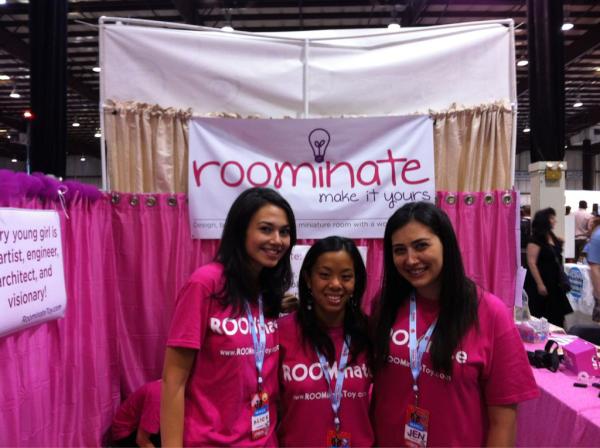
Roominate is in fact proof positive it’s not about the color, it’s about selling smarts through very strategic, targeted, deliberate “by girls, for girls” positioning of STEM as constructable fun.
Roominate gives the heave-ho to Barbie’s Dreamhouse replaced with a DIY, more robust form of engaging play sans plastic peripherals and commodification, in a valiant attempt for a sea change on the STEM disconnect that’s impacting girls and minorities left behind particularly, and many of us asking what can we do to encourage girls in STEM fields more.
(Update: Black Girls Code just sent me this WSJ encouraging VC article Hurray! —And tonight, Sept. 6 Venture Beat reports Roominate’s founders aka the trio of dynamos at “Maykah” their parent company, just took the stage at StartX to much buzz sparking interest far beyond the STEM fem market; very promising! In fact, an hour ago they were just selected as one of the TechCrunch top 5 companies for StartX DemoDay! Congrats!)
Roominate’s niche focus of girls age 6-10 has given them great press already, like the NYT fun headline, “Barbie, not Ken, Does Repairs Here” and Fast Company profile, “A Dollhouse Designed to Get Girls Excited About Tech” with most of the human interest angle focusing on the young female triad of techies themselves, Alice Brooks, Jennifer Kessler, and Bettina Chen as pioneers making tech not only accessible and approachable to girls, but amping up the fun factor as a seamless, natural extension of play…
Though I hope once we go through this ‘market correction’ we can eventually segue back to basics where play is informal learning and storytelling fun, without being carved into his/hers towel sets in terms of pink brain/blue brain gender focus. Why? Because:
Roominate has the ability to engage all kids in its coolness by virtue of the fact that dollhouses are not ‘off limits’ to ANYone.
Imagine a world where “gender apartheid” no longer existed and a toy was a toy once again.
After all, the toy joy of “Maykah” is well researched and reasoned; it’s all about HOW kids play; the exclusivity of building your OWN STEM creation and making your personal mark, regardless of props, colors, fabrics and such.
I know science teachers and after school shop teams could easily replicate the electricity learning, but all too often that ends up “chocolate covered broccoli” as the team wittily refers to the process of hiding education in a wrapper of fun (e.g. circuits inside of craft) The ‘toy’ factor they’ve tapped into has vast marketable potential as ‘kits’ far beyond the dire statistical need of STEM for Girls appeal.
I can also see a fabulous education based ‘habitat’ mashup opportunity for these cool circuit board gizmos with elements of history/geography, (recreating cabins/missions/huts, faux-fire, jazz era, global ways of living, etc) for older kids too. There are multiple ways Roominate could be used in classrooms blending STEM beyond fem…It’s got far more potential than a ‘pink think’ dollhouse concept to me…but I guess that’s why they have the parent company “Maykah” to build on!
As Galaxy Goo.org nonprofit founder Kristin Henry said in a Maker Faire interview when I asked why her teachable tactile cell organisms were every color EXCEPT pink, she replied,
“It’s not that I’m anti-pink, I’m just kind of ‘post pink’ as I feel we’re being assaulted with the color in the STEM field as some sort of play permission programming.” More on that when I feature her in a separate post on more tactile STEM coolness to get kids learning hands-on.
We’re seeing stores like Harrod’s Toy Kingdom FINALLY begin to reroute full circle back to days where “everything is an option” instead of narrowcasting tots into stereotypes and pigeon-holing into pink or blue. (see this fabulous CNN piece about their overhaul and debut, “When Kids Play Across Gender Lines” detailing the destructive bullying that can surface and the logic to group toys by ‘theme’ over gender)
As much as I support She’s Geeky, WIT, GIT, DigiGirlz and niche focus for females in STEM, the marketer in me can’t help but wish we could hopscotch over the marketing/manufactured segregation of gender to quickly consider how easily Roominate could ‘repackage’ into a classroom with multiple colors in a gender neutral form of ‘A Room with a View” touting architecture and innovation universally…
I hope they “ruminate on Roominate” for their post-kickstarter expansion. It’s got chops as a toy for girls AND boys.
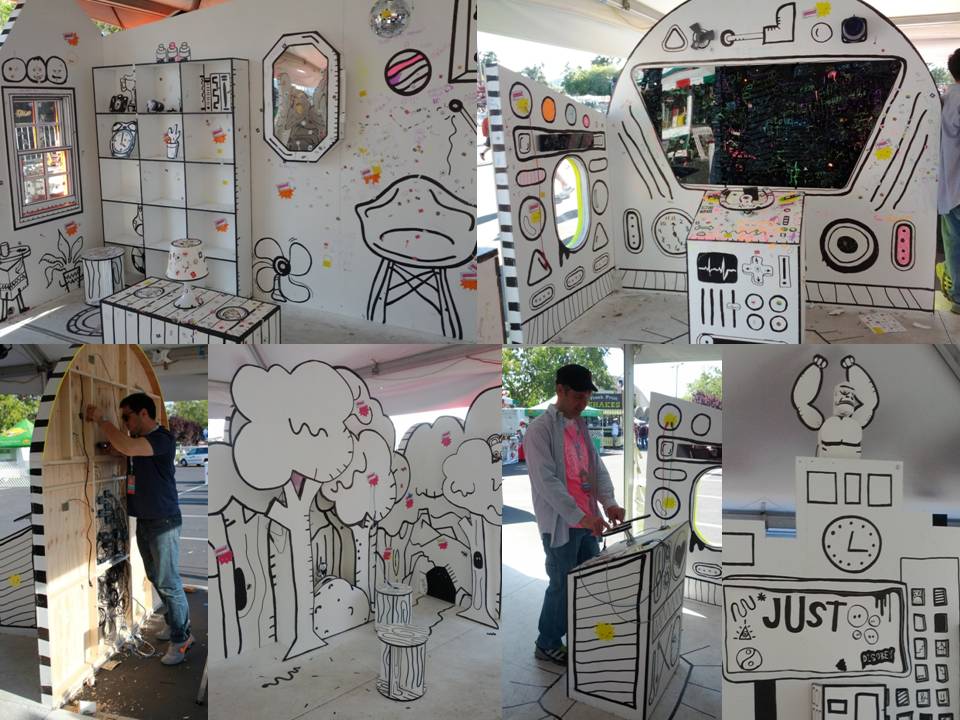 Outside the main Expo Hall, Maker Faire treated me to a life-size version of both of these kits in a “Make Your World” black and white walk-in structure where kids were getting hands-on know how about creating remote control objects to auto-turn on and every input and outputs imaginable in a giant sized playhouse sponsored by Intel and The Lab at Rockwell Group.
Outside the main Expo Hall, Maker Faire treated me to a life-size version of both of these kits in a “Make Your World” black and white walk-in structure where kids were getting hands-on know how about creating remote control objects to auto-turn on and every input and outputs imaginable in a giant sized playhouse sponsored by Intel and The Lab at Rockwell Group.
Kids were coached in small station workshops on circuitry and learning how to add to their ‘builds’ gleefully zooming about the playhouse to ‘test ‘em out’ in real time to see “how things work.”
They were each sent home with a free kit of simple concepts teachers could easily replicate to make learning fun: a foldable line art paper ‘stage, scene and pawn’ with 3 LEDs, a battery and copper tape. Period. Very cool.
To see these concepts in real life, look no further than this Engadget feature on UC Berkeley engineering student Derek Low, a “maker” himself who automated his dorm room into a showcase of a ‘smart room’ world at his command. Pretty wild.
So as we fall back into school routines, let’s hope we ditch the rote screen instruction in ‘computer lab’ mode, and start thinking about STEM as a ‘toy’ for fun to ‘see where they go’ with ideation and problem-solving…School could be a living lab of 21st century makers and future builders if we could quit reining in and instead flare out with fresh ways that appeal in “look what I made” collaboration.
Back to school can mean opening doors to a love of learning and exploration, or closing them tightly with a huff and a slam. It’s up to us all. Who knows, maybe we can all learn to breathe in some fresh air from one of those mini-circuit board STEM fans.
For more hands-on edu/STEM ideas, see my post about Project Raceway, the fabulous STEM “Shop Girls” racing in the Shell EcoMarathon as the all-girl teen team, and their Urban Autos co-ed effort for fuel efficiency ideation. This post I wrote, “How to Drive STEM Careers By Making Math Relevant and Fun has added diversity zip to STEM gender breakthroughs now that Tia Norfleet has become the first African American female NASCAR racer! Let’s hope she steers clear of “Go Daddy” sponsorship raunch and Danica Patrick’s ‘racy role model’ self-objectification for STEM setbacks, bleh)
Here are a few more Maker Faire finds to bring into your world to reach and teach STEM in fun, fresh ways.
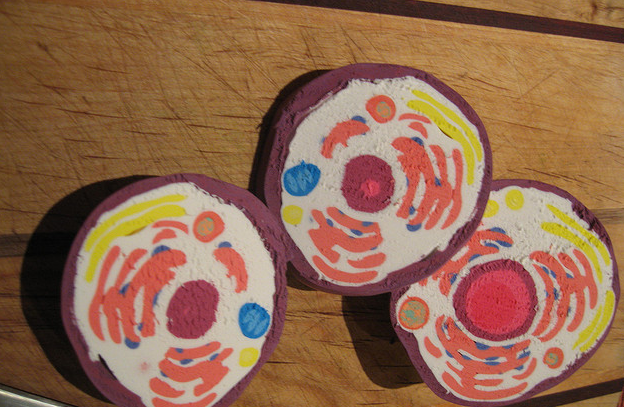 Galaxy Goo: (Back to school feature story to come) A tactile, colorful, sushi-looking cell pattern constructed from modeling clay where students build 3D models of cells from the inside out, organelle by organelle. They let the model dry, slice it open, and examine the cross sections. The site blurb says it well, “The activity is meant to encourage spatial-functional thinking and hands-on learning while using terms in discussions, instead of simply memorizing vocabulary outside of experiential context.” YES!
Galaxy Goo: (Back to school feature story to come) A tactile, colorful, sushi-looking cell pattern constructed from modeling clay where students build 3D models of cells from the inside out, organelle by organelle. They let the model dry, slice it open, and examine the cross sections. The site blurb says it well, “The activity is meant to encourage spatial-functional thinking and hands-on learning while using terms in discussions, instead of simply memorizing vocabulary outside of experiential context.” YES!
Bare Conductive.com: Ever wonder how they make those greeting cards that light up with sound? Have kids design one! This UK company uses electrically conductive, non-toxic paint to create simple circuits with LEDs; sharing umpteen video projects on their site using Vimeo to build their community. (for parents, retail wise their kits are also avail on ThinkGeek, if you can’t wait on buying the pens or paint direct from across the pond)
Howtoons.com and The Scrapkins.com (Feature story to come) Using everyday household objects and recyclables, kids combine storytelling with instructions to spark a love of art, science, engineering and creativity. Scrapkins has a “Build-It Book: 12 Things You Can Make from Junk” and Howtoons is a series of comics that literally teaches how to build with STEM from PVC pipe marshmallow shooters to snowglobes. All about hands-on making versus buying; an educator’s dream.
Instructables.com: This DIY ‘share what you make’ site is a treasure trove of freebie STEM fun; just check out their twitter stream to see the types of buildables and creations being posted in this global community of over 10 million monthly visitors.
Related Reading on Shaping Youth/STEM Specific
How to Drive STEM Careers to Make Math Relevant and Fun
Starting from Scratch: Making STEM Easy, Kid-Friendly & Fun
Wise Women & Alice 3.0: Geek Chic For Girls (pt.1)
BrainCake: Teen Girls Talk Tech & Worldchanging (pt.2)
DigiGirlz: Teen Girls Build Community Online & Off (pt.3)
Shaping Youth Sponsors She’s Geeky: WIT & Wisdom Flourish
Project Raceway: ShopGirls Build STEM Eco-Marathon Car
She’s Geeky: Techno Leaders Converge
She’s Geeky:Vlogging with Ryanne Hodson at She’s Geeky
Media Moms, Engineers, Purple Tornadoes At She’s Geeky
She’s Geeky and Proud of It (My first Shaping Youth geekery)
Misguided Media: Space station takes a backseat to Britney?
Kids Online UNconference: Kaliya Hamlin, Joi Podgorny
Shaping Youth Interviews Girl Mogul Founder/Geek Chic
Related Resources for STEM fields & CTE pathways
WISE women (WISE=”women into science/engineering”)
Brain Cake
Engineer Girl
Girl Geeks
BinaryGirl.com
The Alice Project
Female Science Professor Blogspot
Wise Women Campaign.org/U.K.–WISE Girls
Center for WIT (Women & Information Technology)
Nasa Quest: Women of NASA
ZoeysRoom.com (online community for middleschool girls)
Visual Credits from respective sites, except for Roominate trio, from HuffPo “Women 2.0, Toys to Inspire Next Generation of Female Technology Innovators”
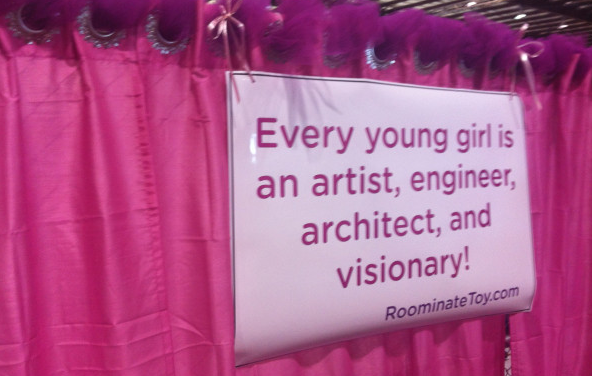








Hello Amy (or Web Admin?) I noticed that your On-Page SEO is is missing a few factors, for one you do not use all three H tags in your post, also I notice that you are not using bold or italics properly in your SEO optimization. On-Page SEO means more now than ever since the new Google update: Panda. No longer are backlinks and simply pinging or sending out a RSS feed the key to getting Google PageRank or Alexa Rankings, You now NEED On-Page SEO. So what is good On-Page SEO?
First your keyword must appear in the title.Then it must appear in the URL.You have to optimize your keyword and make sure that it has a nice keyword density of 3-5% in your article with relevant LSI (Latent Semantic Indexing). Then you should spread all H1,H2,H3 tags in your article.Your Keyword should appear in your first paragraph and in the last sentence of the page. You should have relevant usage of Bold and italics of your keyword.There should be one internal link to a page on your blog and you should have one image with an alt tag that has your keyword….There’s a simple WordPress plugin that does all the On-Page SEO, and automatically…just watch this 4minute video for more information at. WordPress Seo Plugin
Danette, Yes, we’re just now (sloooooowly) switching over to WordPress Engine…I’ll tell our tech guy Sky (Red7.com) to get on it, AND to check out this plug in, thank you.
I DO need training up the wazoo as we port over to the new and improved Shaping Youth site (w/better SEO hopefully as well, I’m a writer, not a coder)
Any consultants in Genesis ChildTheme that can offer training/support with widgets and such, do let me know. (yes, ironic that it’s on a STEM/fem post and I’m outreaching for experts to lend a hand…so do forward any pros my way as Sky is rather overloaded) Thanks Danette…